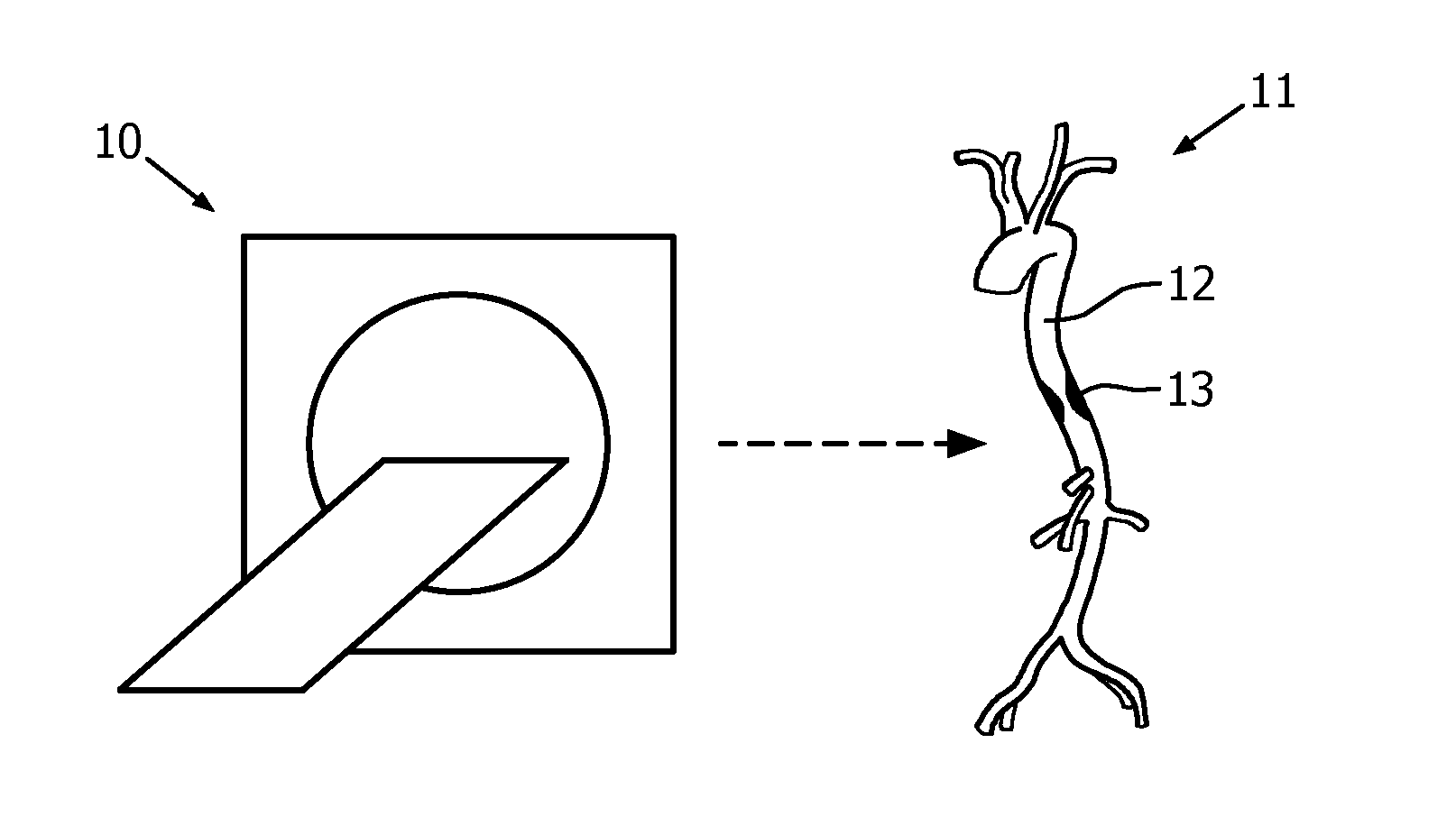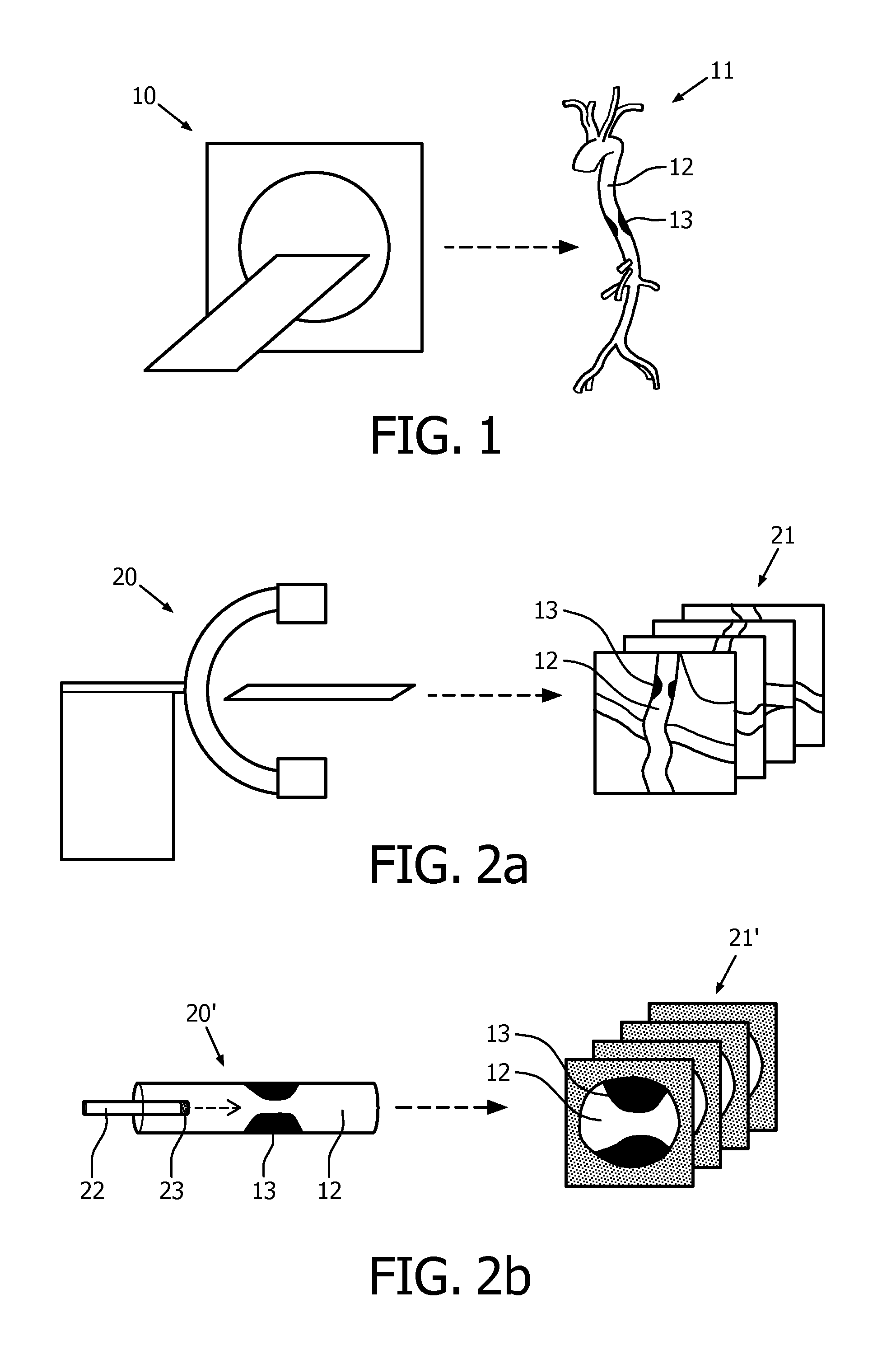Stenosis therapy planning
a stenosis and therapy technology, applied in the field of stenosis therapy planning, can solve the problems of insufficient accuracy of arterial dimensions and/or stenosis degree, inability to accurately and/or effectively plan interventional therapy, follow-up interventional procedure,
- Summary
- Abstract
- Description
- Claims
- Application Information
AI Technical Summary
Benefits of technology
Problems solved by technology
Method used
Image
Examples
Embodiment Construction
[0028]A physician confronted with a patient with a known or suspected arterial stenosis, in particular a coronary artery stenosis, has several treatment options to treat the stenosis by reducing or removing the stenosis, including, but not limited to placing a stent, a ballooning procedure, bypass or other surgery, prescribing medication or a diet, advice lifestyle changes or even take a decision to perform no action at that moment and keep monitoring the situation over time and defer treatment to a later moment in time. If the physician has access to a reliable prediction of an outcome of one or more treatment options, he may better plan and select a most effective treatment.
[0029]In the present invention the patient undergoes at least two imaging procedures: a (non-invasive) medical imaging procedure to obtain a volumetric (three-dimensional) data set and a medical imaging procedure to obtain two-dimensional images along different projection directions. Furthermore, an arterial pr...
PUM
 Login to View More
Login to View More Abstract
Description
Claims
Application Information
 Login to View More
Login to View More - R&D
- Intellectual Property
- Life Sciences
- Materials
- Tech Scout
- Unparalleled Data Quality
- Higher Quality Content
- 60% Fewer Hallucinations
Browse by: Latest US Patents, China's latest patents, Technical Efficacy Thesaurus, Application Domain, Technology Topic, Popular Technical Reports.
© 2025 PatSnap. All rights reserved.Legal|Privacy policy|Modern Slavery Act Transparency Statement|Sitemap|About US| Contact US: help@patsnap.com



